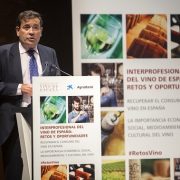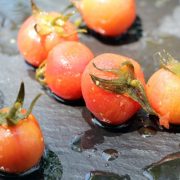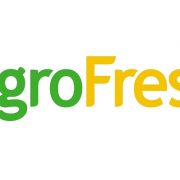The harvest of fruit bone in Castilla-La Mancha will grow by 6.5%, according to agricultural cooperatives
Agro-alimentary cooperatives of Castilla-La Mancha foresee an estimated harvest of fruit bone in its autonomous community around the 55,171 tons, in a total of 3,714 hectares of cultivation. This figure represents a 6.51% increase in production compared to the previous season, when 51,799 tonnes were obtained. The apricot is the only fruit that will suffer a significant reduction in production compared to last year, due to spring frosts and rains during the flowering season.
According to these forecasts, almost all the stone fruits will increase their production, standing out in absolute value the increase in yellow peach that goes from 32,400 tons to 39,000 in this campaign (a 20.40% more)
Other freshly bred stone fruits in Castilla-La Mancha, such as the Paraguayan, nectarine or peach also experience a significant increase, not so much in absolute value but in percentage, as is the case of the Paraguayan, which goes from 730 tons to 2,000 (a further 174%), nectarine, from 400 tons to 1,000 (150% more), and peach, which will increase from 5 tons in 2016 to 15 in 2017 (200% more).
Apricot deserves special attention, which decreases its production by 36.12%, going from 16,994 tonnes last season to 10,856 tonnes, according to the forecast for 2017
This important reduction in the apricot is due, as stated by the sectoral technician of Agro-food Cooperatives, Jesús Ángel Peñaranda, “mainly to the frost of the spring (especially the frost from 23th to 24th March), since in the moment of the flowering we had more of 30 degrees and rains, causing a significant reduction of the crop by bad curd”.
Excellent quality
Among the highlights of this campaign, Peñaranda points out that “the variety of apricots in Brazil remains the most demanded, both for pulp and cream and halves; For fresh, year after year the quantity is increasing, both in destination to the national market and to export, in addition to emphasize the increase of the demand of ecological apricot “.
Also, the stagnation of the planted area in the region of apricot and yellow peach is verified. In the case of apricot, old plantations of the Bulgarian variety (mainly for industry) are being replaced by other varieties of red veneer (intended for fresh).
Regarding the yellow peach, Albacete concentrates 95% of the cultivation of the variety Pavia in Castilla-La Mancha, and its regions of Hellín and Tobarra are one of the main producing areas of Spain.
“What is a common denominator in all varieties, fortunately, is quality,” says the technician of Agro-food Cooperatives, “an excellent quality is foreseen that will undoubtedly have an impact on the sales of the product.”
Source: Agro-food cooperatives of Castilla-La Mancha
















